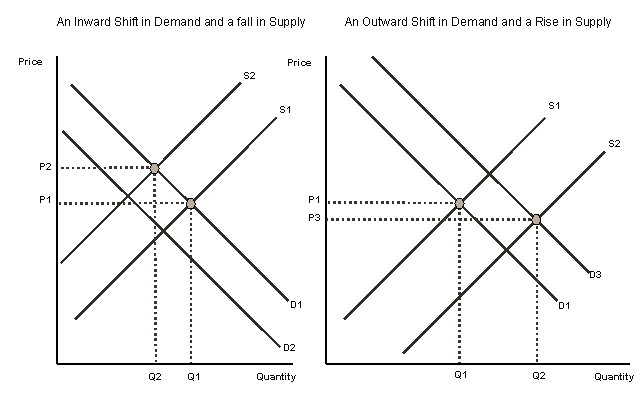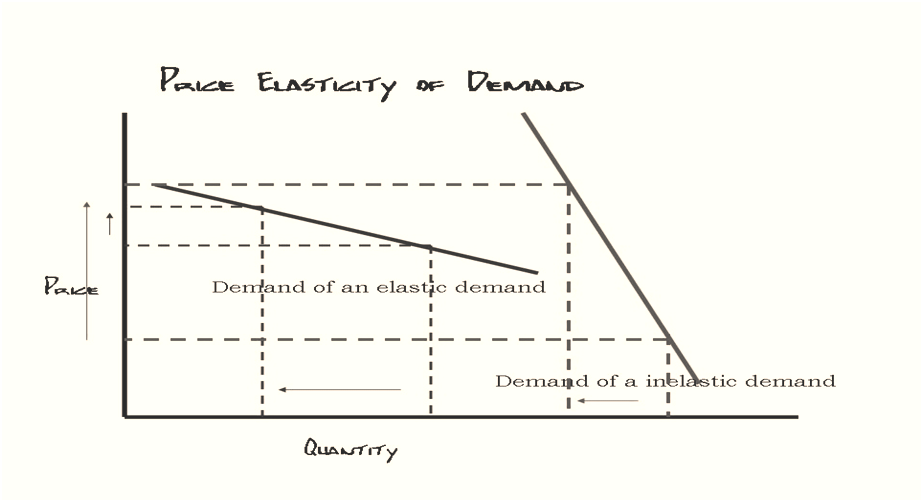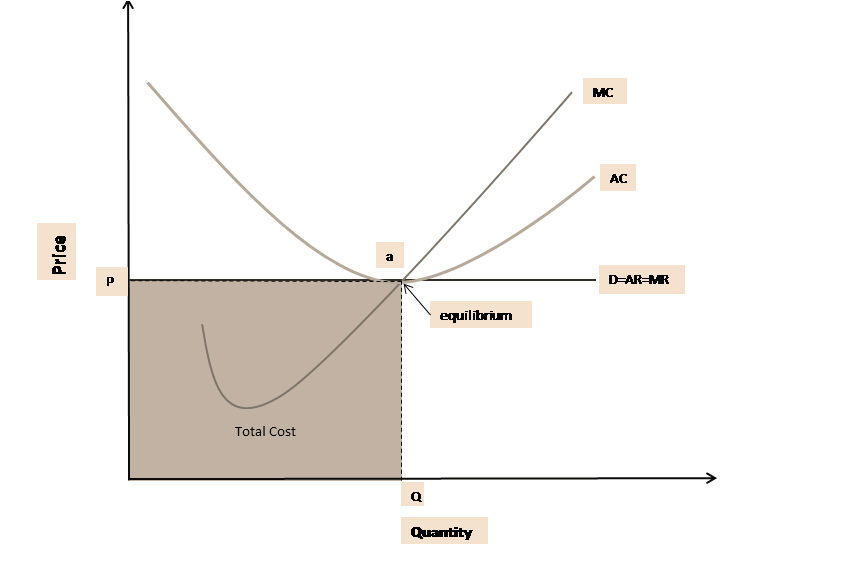Introduction
The Primark Company supplies its customers with garments based on various ethical codes of conduct. The organisation regards a high sense of responsibility and sustainability among other practices that alleviate adverse social effects. Although the main goal of the Primark Company is to ensure that its products and services are ethically produced and delivered, its ethics entail responsibility that embraces the evaluation and engagement with other stakeholders such as suppliers in the market. This situation has ensured positive returns in terms of improved brand reputation and increased competitive advantage among others. The report presented to the management panel elaborates how the Primark Company has been sourcing the garments through ethical means and fair cost. The report will highlight the economic functioning of the market of the Primark stores, possible types of market failures in relation to the basis of ethical issues, and various intervention plans that have been executed by the government. Lastly, the report will bring forward possible recommendations for the company.
Economic Functioning of the Market of Primark Store
Supply and Demand
Changes in market conditions have shifted the demand or supply curves. This situation has led to significant shifts in price equilibrium and quantity of products in the market. Willingness to buy is influenced by many factors such as prices, income earned by the consumers, potential buyers, and prices of substitute commodities among others (Wurgler & Zhuravskaya 2002).
Changes in the supply market ensure that producers deliver less or more units at any given price of a garment. The supply curve shifts when there are producers of the garments, change in factor price, and technological advancement. The curve shifts outwards due to a fall in production costs pertaining to labour, materials, and government subsidies among others. In this perspective, low prices are exhibited in the Primark Company. The lower prices are due to the fire tragedy that led to the collapse of the Rana building in Bangladesh. As a result, most consumers prefer to purchase from the Primark stalls in Bangladesh than in the UK. Due to such circumstances, lower prices are offered to the consumers owing to their purchase behaviour (Wurgler & Zhuravskaya 2002).
The activities of the Primark Company, especially in its branch in Bangladesh, have been noted to be extremely slow due to the tragedy that happened a few years ago. The low costs together with the absence of duties levied on the Bangladesh commodities by the European Union countries, most companies such as Benetton are currently facing price competitions from others such as Zara and H&M. Consequently, many businesses including the Primark Company are producing in Bangladesh due to low supply costs supply in the country. Therefore, the company’s consumers buy the products in bulk (Wurgler & Zhuravskaya 2002).

Incentives
To ensure sustainability and competition in the market place, the Primark Company has launched an incentive to provide ethical garments (Wurgler & Zhuravskaya 2002).
Elasticity of Demand
The Primark Company experiences a positive elasticity of demand due to the increasing consumer willingness to purchase its products. This situation has been brought about by improved income amongst the consumers. They opt to buy products that are cheap due to the ethical standards that are considered in the firm. With respect to the elasticity of demand, high prices ensure reduced purchases. In this case, the demand becomes elastic as consumers focus on items that are priced low. This technique favours the Primark Company due to the lower prices of garments. Companies that offer garments that are more expensive such as H&M and Benetton face inelasticity; hence, their consumers are not affected by the tendency of the buying behaviour (Wurgler & Zhuravskaya 2002).

Market Structure and Equilibrium
The market structure exhibited by the Primark Company is perfect competition. The textile industry poses a pure competition system due to the growth rigidity in the E-commerce in both domestic and international markets. The company’s market structure can be regarded as perfect competition due to the price determination technique whereby the strength is derived from the increased consumer demand for the garments. Another reason for the perfect structure is that the garments produced are identical to those of the competitors. Therefore, the rival companies also exhibit a perfect competition. The consumers are also aware of the information concerning prices of all the garments provided amidst the shifting market patterns (Wurgler & Zhuravskaya 2002).

Demographic Patterns
Due to changes in technology, the Primark Company has about 278 stores spread in the UK, Ireland, Spain, Netherlands, Germany, Belgium, Portugal, India, and China. These regions have high street retailers that are frequented by most of the consumers (Jones et al. 2010).
Explanation of Possible Causes and Effects of Shifts in Demand and Supply in Garment Industry
Various factors that are noted to have causes and effects on the demand and supply of products include the increment in the average income of the consumers. Most of the company’s consumers come from the high street areas with favourable incomes that attract expenditure. Regions such as China and India also have large populations that have amplified the demand for the products. In addition, the prices of the garments are low. This situation has also increased the consumers’ willingness to purchase the products of the Primark Company. Other issues include special influence and incentives such as the delivery of ethical garments. On the other hand, a shift in supply is mainly caused by the intensification of technology and reduced production costs among other factors. This situation is evident in the decreased supply costs in countries such as Bangladesh and Turkey (Ritch & Schröder 2012).
Income Elasticity of Demographic Groups
Several factors influence the income elasticity of various demographic groups. The Primark Company garments are viewed as luxuries due to increased positive elasticity of demand.
Explanation all possible Types of Market Failures in the Primark Company, particularly based on the Ethical Issue
The Primark Company is known for its well-developed chain of supply policy. The management is always committed to pay the workers the recommended living wages. It also acquired membership from the Ethical Trading Initiative (ETI) besides striving to solve problems that were related to the supply chains and home-based work (Bruce & Daly 2007). Although such tremendous progresses have been made, there has been a growing concern over the exploitation of employees, especially women workers in India. The workers are considered readily available; hence, they provide a cheap workforce. This report was established in 2011 by the campaigners of the ETI. This situation can derail the success of the enterprise if the company does not correct the problems. Other reports released by the SOMO showed that most employees were facing excessive work and low wages. Most firms failed to address the issues of their employees successfully. However, such issues are being addressed in the Primark Company to ensure the progress of the company’s endeavours (Cairns & Roberts 2007; Perry & Towers 2009). Issues of environmental concern faced by the ABF Company also affect the Primark enterprise. The company has no direction towards the mitigation of the effects it has caused to the environment. The unsustainable use of palm oil is a concern that is not properly addressed by the entity (Carrigan & De Pelsmacker 2009; Goworek 2011).
Political Issues
The ABF, a parent company of the Primark firm, operates in various tax-haven regions such as Hong Kong, Jersey, Luxembourg, and Singapore. It was noted that various executive directors received hefty cash in 2012. For instance, two of the directors received approximately £1,796,000 and £1,193,000 respectively. These amounts were above the recommended upper limit of £1 million that is considered by ethical consumers (Goworek 2011).
Government Interventions to solve the Problems
The UK government has ensured that the Primark Company uses a sound ethical code of conduct to rectify various problems concerning the garment industry.
Prohibition of Sandblasting
Various activities are unethical; hence, they are prohibited by the Primark Company. Such activities pertain to sandblasting techniques, mulesing of sheep, and policies to guard animal welfare among others. Through the government, the company made a decision in 2010 to stop sandblasting to protect the health of its workers. It has developed and implemented alternative techniques that are safe and viable to lure more customers to purchase its products (Akgun et al. 2012).
Living Wages
The Primark Company has been enabling the principles of the wage supply chain. This principle aims at providing clarity on various concepts, responsibilities, and roles of the stakeholders to ensure that the wages meet the workers’ basic needs. Moreover, the company supports the position that all workers receive sufficient wages to meet their needs for food and safe water among others. For example, the minimum working wage for workers ranges from £24 to £40 in Bangladesh (Akgun et al. 2012).
Purchasing Practices
Due to good purchasing practices, the company has registered an increase in sales. This situation has amplified its profits. The sales were expected to increase to 17 percent last year. The earnings per share in the year were also projected to be above that of 2014 (Williams 2009). The earnings from the sugar division were low as indicated in a report that was released in 2014. Therefore, the estimation of double sales in the Primark Company is aimed at ensuring that losses of about £128 million in the sugar division are offset (Williams 2009).
Employment Opportunity
The welfare of employees is highly regarded in the Primark Company. The management strives to harmonise wages and working conditions to improve the living standards of the employees; hence, eradicate poverty. For example in Bangladesh, the company has employed many workers from the country since the textile business constitutes about 80 percent of its exports (Williams 2009).
Compensation Plans
The collapse of the Rana Plaza factory in Bangladesh in 2013 killed approximately 1,100 people while 2,500 others were injured. Due to such accidents, most international entities are criticised for their slow actions to improve the conditions of the employees. Some companies such as Wal-Mart and Benetton failed to reach a meeting that was meant for the development of a compensation plan. The company ensured that the victims and their families who were affected by the tragic incident were compensated. At the outset, the company accepted the responsibility due to the concern of the employees over the working conditions. A fire incident resulting from long working hours also killed 112 workers in the same Bangladesh region. This situation called for an improvement of the working conditions (Williams 2009).
Recommendation to both the Government and Primark Company
- The Primark Trade Team should work with both external suppliers and internal colleagues who include buyers and merchandisers to ensure that ethical trading principles are embedded in the business system.
- The organisation should ensure that its workforce undergoes rigorous training in ethical business. Furthermore, it should train it consumers and suppliers in ethical trade to guarantee sustainable business activities. The government should also provide support to the Primark Company by enacting laws that protect the environment, employees, and policies for effective business operations. Through this action, the company and government will maintain and sustain ethical standards with various stakeholders in the operations of the business.
Conclusion
The report has elaborated the Primark technique of ethical supply of garments to its consumers. Emphasis is laid on the economic functions of the market, types of failures in relation to ethical issues, and various government intervention plans. The report reveals that the Primark Company is facing ethical challenges irrespective of having elasticity in the demand and supply of garments. The training of consumers and employees in matters concerning the ethical issues in business is recommended to help curb the events that can lead to derailed performance.
References
Akgun, M, Ucar, E, Araz, O & Parker, J 2012, ‘Prognosis of patients with silicosis due to denim sandblasting’, CHEST Journal, vol. 141 no. 3, pp. 831-831.
Bruce, M & Daly, L 2007, Fashion Marketing: Contemporary Issues, Elsevier, New York, NY.
Cairns, G & Roberts, J 2007, ‘A discussion of Fashion Victims: Various responses to the report by War on Want’ Critical Perspectives on International Business, vol. 3 no. 2, pp. 170-185.
Carrigan, M & De Pelsmacker, P 2009, ‘Will ethical consumers sustain their values in the global credit crunch?’, International Marketing Review, vol. 26 no. 6, pp.674-687.
Goworek, H. 2011, ‘Social and environmental sustainability in the clothing industry: a case study of a fair trade retail’, Social Responsibility Journal, vol.7 no.1, pp. 74-86.
Jahdi, K 2015, Ethical Fashion: An Exploratory Research, Web.
Jones, P, Comfort, D, Bown, R & Hillier, D 2010, ‘Sustainable consumption and the UK’s leading clothing retailers’, World Review of Entrepreneurship, Management and Sustainable Development, vol. 6 no. 3, pp. 244-259.
Perry, P & Towers, N 2009, ‘Determining the antecedents for a strategy of corporate social responsibility by small-and medium-sized enterprises in the UK fashion apparel industry’, Journal of Retailing and Consumer Services, vol. 16 no. 5, pp. 377-385.
Ritch, E & Schröder, M 2012, ‘Accessing and affording sustainability: The experience of fashion consumption within young families’, International Journal of Consumer Studies, vol. 36 no. 2, pp. 203-210.
Williams, P 2009, ‘The Ethical Trading Initiative: Tenth Anniversary Conference’, Development in Practice, vol. 19 vol. 3, pp. 424-426.
Wurgler, J & Zhuravskaya, E 2002, ‘Does Arbitrage Flatten Demand Curves for Stocks?’, The Journal of Business, vol. 75 no. 4, pp. 583-608.